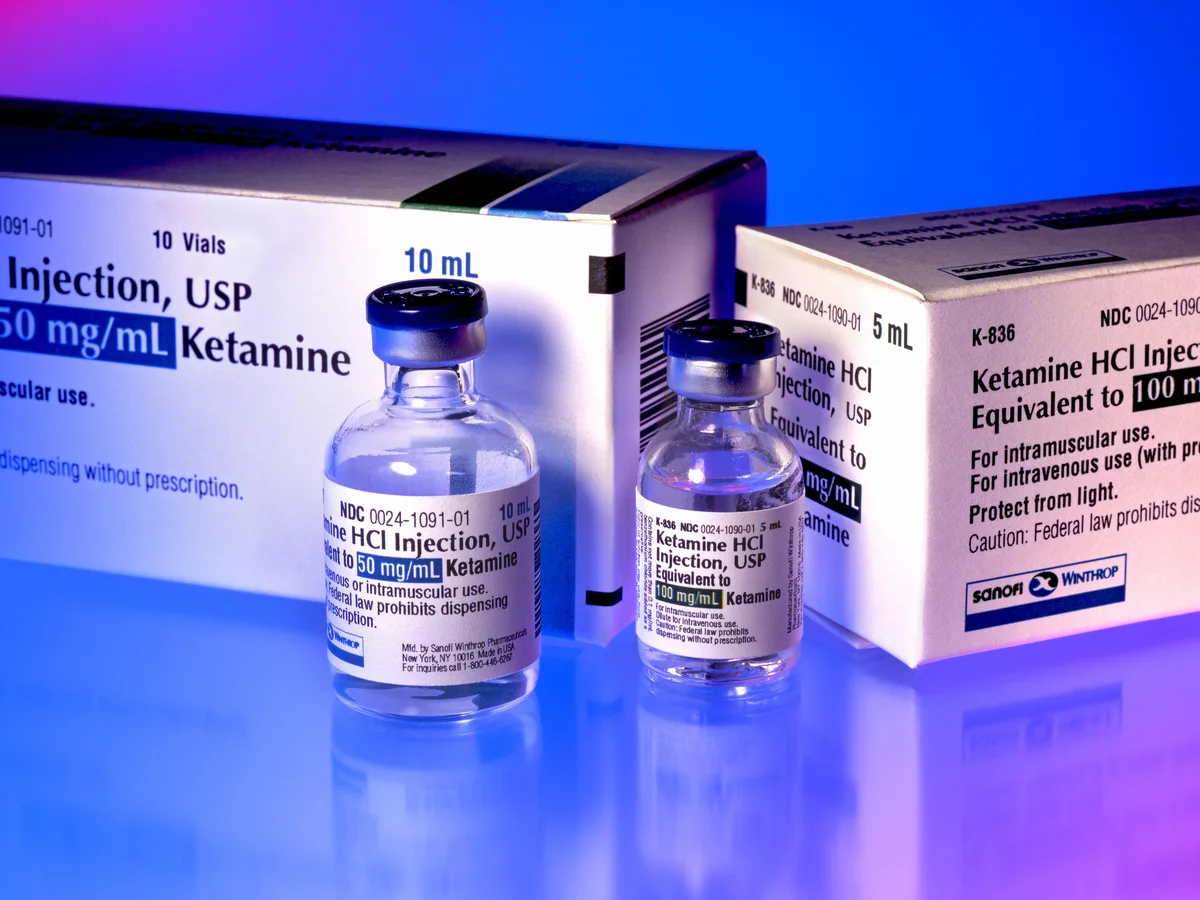Major depressive disorder (MDD) continues to be a leading cause of disability worldwide, affecting over 280 million people according to the World Health Organization. For many, first-line treatments such as SSRIs, SNRIs, or cognitive behavioral therapy provide some relief. However, for up to 30% of individuals, these traditional approaches are not enough. They suffer from what’s termed treatment-resistant depression (TRD) — a form of depression that persists despite trying two or more antidepressant treatments.
This treatment gap has fueled interest in novel, fast-acting therapies, with ketamine at the forefront. Once known mainly as an anesthetic and recreational drug, racemic ketamine is now making headlines as a powerful antidepressant. But how effective is it really? And what does the science say about its safety?
A landmark meta-analysis of 49 randomized controlled trials (RCTs) involving 3,299 participants offers some answers.
A Meta-Analysis of 49 RCTs: The Evidence Is In
This meta-analysis, published in sources such as PubMed Central and The Lancet Psychiatry, pooled together rigorous clinical studies evaluating ketamine’s use in depression treatment. Unlike single trials, which may have small sample sizes or varying designs, a meta-analysis combines data across studies to give a clearer picture of treatment efficacy and safety.
Summary of Key Data Points:
- Number of studies included: 49
- Total participants: 3,299
- Treatment type: Racemic ketamine (a 50:50 mixture of R-ketamine and S-ketamine)
- Indications: Major depressive disorder, treatment-resistant depression, bipolar depression
- Delivery methods: Intravenous (IV), intramuscular (IM), and oral ketamine
Key Findings:
- 🧠 Moderate-to-large antidepressant effects: Patients receiving ketamine showed statistically significant reductions in depression severity scores compared to control groups.
- 🔁 Repeated dosing works best: The therapeutic effects of ketamine strengthened and became more sustained with multiple sessions over time.
- 💉 Rapid onset: Unlike SSRIs that can take weeks, ketamine often starts to work within 1 to 4 hours post-administration.
- 👍 Acceptable safety profile: Side effects were generally mild, including transient dizziness, nausea, or dissociation. Serious adverse events were rare.
How Does Racemic Ketamine Work?

The science behind ketamine is still unfolding, but several mechanisms help explain its fast-acting antidepressant effects:
1. NMDA Receptor Antagonism
Ketamine blocks the N-methyl-D-aspartate (NMDA) receptor, a subtype of glutamate receptor. This blockade reduces excitatory neurotransmission and modulates pathways involved in mood regulation.
2. AMPA Receptor Activation
Interestingly, NMDA antagonism increases activity at another receptor — the AMPA receptor. Enhanced AMPA signaling may be essential for the antidepressant effects, promoting synaptic plasticity and communication between neurons.
3. BDNF and Synaptogenesis
Ketamine rapidly increases levels of brain-derived neurotrophic factor (BDNF) and stimulates the growth of new synaptic connections in the brain. This is believed to counteract the synaptic deficits seen in chronic depression.
4. Default Mode Network Disruption
Functional imaging studies suggest that ketamine temporarily disrupts the default mode network (DMN) — a set of brain regions often hyperactive in depression and associated with rumination. Resetting this network may allow for more adaptive mental processing.
Why Racemic Ketamine Stands Out
Racemic ketamine contains equal parts of R-ketamine and S-ketamine. Most FDA-approved ketamine treatments (like Spravato) use only S-ketamine, but research suggests the R-enantiomer may offer longer-lasting effects with fewer side effects.
Some comparative studies have shown that racemic ketamine:
- Provides broader therapeutic effects than S-ketamine alone
- May produce less dissociation and psychotomimetic symptoms
- Has potential neuroprotective and anti-inflammatory properties
Clinical Use Cases: Who Can Benefit?
While racemic ketamine is not yet approved for depression by the FDA (unlike S-ketamine/Spravato), it is increasingly used off-label in clinical settings, especially for patients who:
- Have not responded to multiple antidepressants
- Are at high risk for suicide and need fast symptom relief
- Experience severe, chronic depression that interferes with daily functioning
Ketamine is usually administered in clinics via IV infusion protocols, typically starting with 6 infusions over 2–3 weeks, followed by maintenance sessions. Intramuscular (IM) and lozenge-based therapies are also available, though they are less studied.
Real-World Outcomes: What Do Patients Report?
Patient testimonials often echo the rapid changes observed in clinical trials. Many describe a sudden “lifting” of depressive symptoms, improved clarity, and even emotional breakthroughs during or after sessions.
However, it’s not always a miracle cure. About 20–30% of patients do not respond, and some experience emotional blunting or fatigue. That said, for responders, the impact can be profound and life-altering.
Addressing Safety Concerns
Ketamine’s prior reputation as a recreational drug has led to skepticism about its clinical use. However, when administered in controlled medical settings, it has a strong safety profile.
Common Side Effects:
- Mild dissociation or a “floating” feeling
- Dizziness or lightheadedness
- Increased blood pressure during treatment
- Nausea or headaches
Rare but Serious Risks:
- Risk of misuse if not medically supervised
- Bladder issues in long-term recreational use (not seen in clinical use)
- Temporary increase in anxiety or confusion
Clinics mitigate these risks by screening patients carefully, administering ketamine in a monitored setting, and offering psychological support alongside medical treatment.
Combining Ketamine with Psychotherapy
One of the most exciting areas of development is ketamine-assisted psychotherapy (KAP). In this approach, ketamine is used to help patients become more open and emotionally flexible, allowing therapy to be more effective.
Ketamine sessions may be followed by integration therapy, where patients reflect on their experience and apply insights to real-life challenges. Early research suggests that combining ketamine with therapy:
- Increases treatment durability
- Reduces relapse risk
- Helps process trauma and stuck emotional patterns
Limitations of the Meta-Analysis
While the findings are promising, it’s important to consider the study’s limitations:
- Not all studies used the same ketamine dosage or delivery method
- Long-term effects beyond 6 months remain under-researched
- Many trials were small or had limited follow-up periods
- Placebo effects can be difficult to control with psychoactive substances
Nonetheless, the overall consistency of antidepressant effects across diverse studies makes the evidence robust and actionable.
The Future of Depression Treatment?

As science moves beyond the monoamine hypothesis of depression (focused on serotonin and dopamine), treatments like ketamine that target glutamate signaling and neuroplasticity are ushering in a new era.
Ongoing developments include:
- Oral R-ketamine formulations in clinical trials
- Personalized ketamine treatment protocols based on biomarkers
- Exploration of ketamine analogs with reduced dissociative effects
- Wider insurance coverage and regulatory acceptance
Final Thoughts
For millions with treatment-resistant depression, racemic ketamine represents a paradigm shift. With its rapid onset, high efficacy, and growing research base, it has the potential to transform how we approach depression care.
Still, it’s not a silver bullet. As with all treatments, ketamine works best when tailored to the individual, integrated with psychotherapy, and delivered within a structured, ethical medical framework.
As more data emerge and awareness grows, racemic ketamine could become not just a last resort, but a frontline option for those in urgent need.
References
- Kishimoto, T. et al. (2022). Meta-analysis of the antidepressant effects of racemic ketamine in RCTs. [The Lancet Psychiatry].
- Coyle, C.M., Laws, K.R. (2015). The use of ketamine in depression: A systematic review and meta-analysis. Human Psychopharmacology.
- Singh, J.B. et al. (2016). A double-blind, randomized, placebo-controlled dose-frequency study of intravenous ketamine in patients with treatment-resistant depression. Am J Psychiatry.
- Zanos, P. et al. (2018). Ketamine and Ketamine Metabolite Pharmacology: Insights into Therapeutic Mechanisms. Pharmacological Reviews.
- Feder, A. et al. (2021). Efficacy of ketamine for treatment-resistant depression: A systematic review and meta-analysis. JAMA Psychiatry.
- McIntyre, R.S. et al. (2021). Synthesizing the evidence for ketamine and esketamine in treatment-resistant depression: an international expert opinion. The World Journal of Biological Psychiatry.
Wilkinson, S.T. et al. (2018). The Effect of a Single Dose of Intravenous Ketamine on Suicidal Ideation. Biological Psychiatry.




